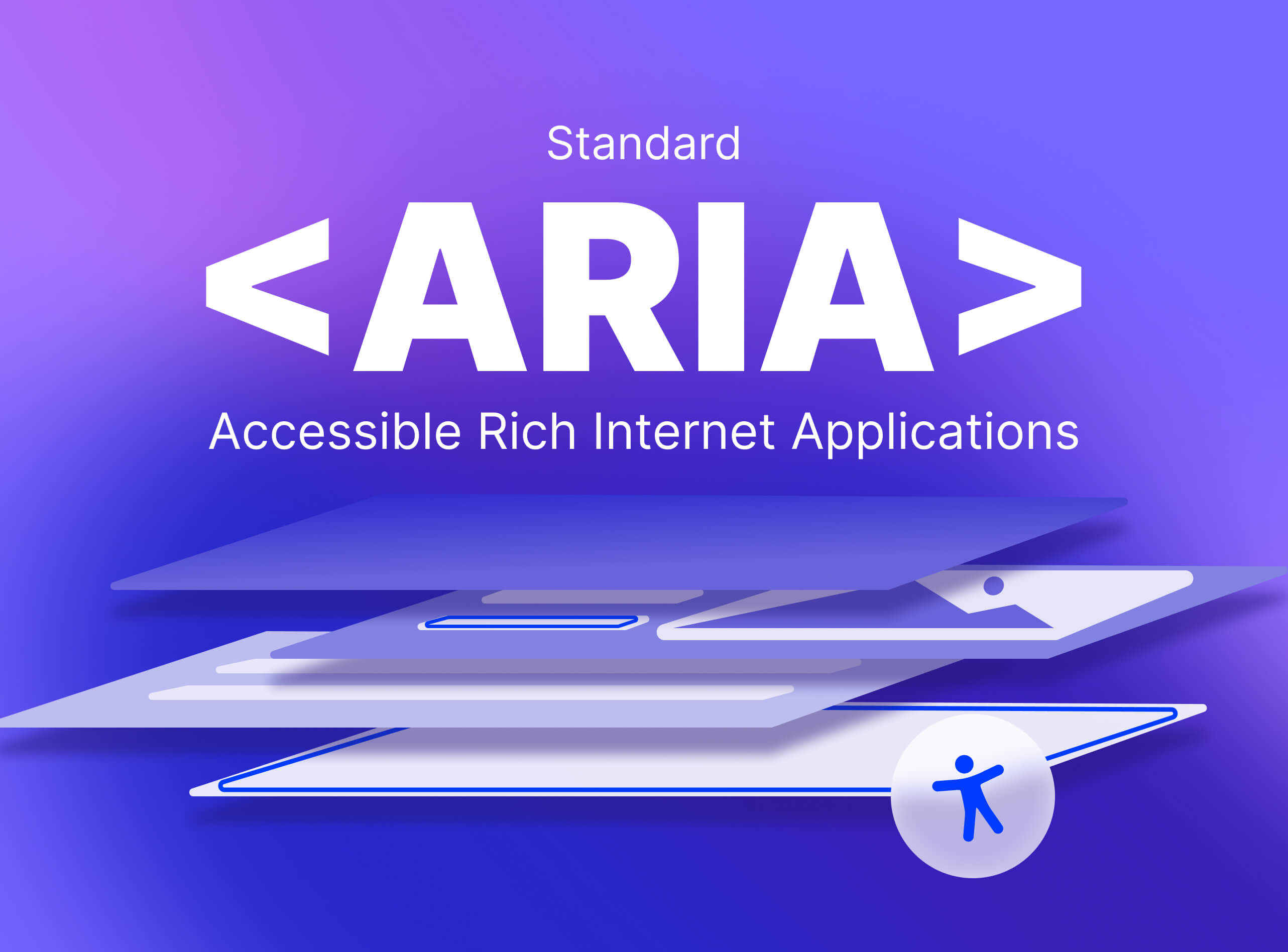
Website accessibility: the fundamental role of ARIA attributes
Digital accessibility is no longer an option, it’s an essential part of web design. In a world where much of our daily interaction happens online, it’s crucial to ensure that everyone, including people with disabilities, can browse, read, interact with, and use content without barriers.
This principle goes beyond inclusivity. Since June 2025, following the enforcement of the European Accessibility Act, private companies have also started to engage with digital accessibility. An important step that drives the web toward greater equity and responsibility.
Many websites rely solely on basic HTML elements, but when developing dynamic or custom interfaces, HTML alone isn’t enough. Tools are needed to help assistive technologies, such as screen readers, understand the role and state of the elements on a page.
This is where ARIA attributes (Accessible Rich Internet Applications) come into play.
What ARIA attributes are and why they’re essential
ARIA attributes are tools designed to improve the accessibility of websites, especially when using custom or dynamic elements that aren’t fully recognized by screen readers and other assistive technologies.
With ARIA, developers can better communicate the structure, function, and state of page elements, creating a user experience that’s clearer, more consistent, and more usable for everyone.
Imagine a custom dropdown menu built using simple <div> elements.
Without additional instructions, a screen reader would interpret it as just a collection of text blocks, without understanding that it’s an interactive menu.
With ARIA, however, we can make its role and state explicit.
For example, by adding role="button" and aria-expanded="false" to the button that opens the menu, the screen reader will clearly announce that it’s a button and indicate whether the menu is open or closed.
How to use ARIA attributes
ARIA attributes are applied directly in the HTML code, adding supplementary information to elements. There are three main types:
- Roles (role): define the function of an element.
Example: role="button" indicates that an element (for instance, a <div>) behaves like a button. It’s best to use this only when, for design or customization reasons, a native semantic element such as <button> cannot be used. - States (aria-*): describe the current condition or status of an element.
Example: aria-expanded="true" indicates that a dropdown menu is open. - Properties (aria-*): provide additional relationships or descriptive information.
Example: aria-labelledby="title-id" links an element to a title that describes it.
Why ARIA is important
Properly integrating ARIA attributes means:
- Making content understandable for screen reader users.
- Improving interaction for keyboard-only navigation.
- Increasing compliance with current regulations, including the European Accessibility Act effective in 2025.
- Promoting a more inclusive and responsible web.
- Enhancing overall usability and, in some cases, even technical SEO.
5 mistakes to avoid when using ARIA attributes
ARIA attributes are powerful tools for improving digital accessibility, but incorrect use can cause problems. Here are the five most common mistakes to avoid:
- Using ARIA when a semantic HTML element already exists: always prefer native semantic elements like <button>, <nav>, or <form> instead of adding
ARIA to non-semantic elements. - Adding ARIA attributes without associated functionality: attributes like aria-expanded describe a state but don’t change it on their own. Ensure dynamic behavior is handled with code (e.g., JavaScript) alongside the ARIA attributes.
- Forgetting to update ARIA states dynamically: if the state of an element changes (for example, when a menu opens or closes), the corresponding ARIA attributes must also be updated to remain consistent with reality.
- Hiding important content with aria-hidden="true": this attribute hides content from screen readers but can leave the element visible and interactive for other users. Use it only when the content is truly redundant or non-essential.
- Ignoring accessibility testing: always test your website with specific accessibility tools and real screen readers to ensure that accessibility works as intended.
A step forward toward digital accessibility
In the journey toward full digital accessibility, ARIA attributes are an essential tool to fill the gaps of traditional HTML, especially in dynamic and interactive contexts.
Understanding how they work and integrating them correctly into the code can significantly improve website accessibility, making sites more inclusive, usable, and compliant with European regulations.
Attention to these aspects is not just a technical requirement, but a sign of responsibility toward everyone.
For us, the proper use of ARIA attributes is just as important as a visually appealing design: both contribute to creating websites that are functional, inclusive, and compliant with European standards.


